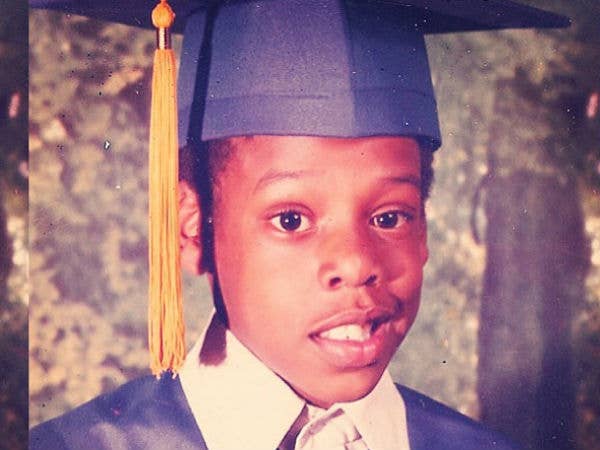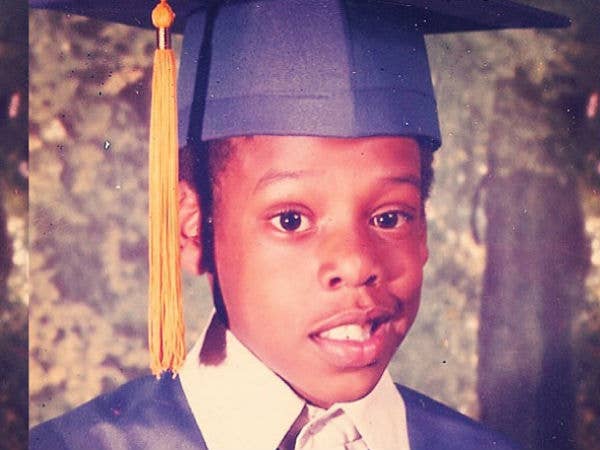1.

Image via StyleCaster
Hip-hop fans and amateur historians: set aside an hour and a half to watch DJ Stretch Armstrong and Bobbito Garcia’s Radio That Changed Lives, the documentary celebrating the duo’s seminal late night show. RTCL is a vibrant, vital testament to rap’s formative years as American popular music’s dominant commercial and cultural force. Few documentaries capture the changing of the guard from the Golden Era to the “Shiny Suit” Era as vividly as RTCL.
As hip-hop solidified its ubiquity in the public consciousness through the early ’90s, the Stretch and Bobbito Show became a proving ground for young rappers. Nocturnal New Yorkers had to fine-tune their dials to find the prize in a sea of static: 89.9 FM at 1 a.m. on Friday mornings to hear Stretch and Bobbito introduce a who’s who of future rap icons: Nas, Jay Z, the Notorious B.I.G., the Wu Tang Clan, Busta Rhymes, Big L, Big Pun, Eminem.
While the show’s primary power came in its position as a cutting edge platform for breaking artists to fans and industry onlookers, it proved an equally important inspiration for aspiring rappers: if you wanted to rhyme on the Stretch and Bobbito show, you had to bring it.
Bringing it meant practice. Lunch room battles. Rapping in the mirror. Learning new words. Writing verses. Rewriting verses. Practicing verses until they became second nature. Performing in ignominious open mics. Being booed—then understanding how to win a crowd back.
Bringing it meant hard, continuous toil in obscurity—on top of the intangibles that separate great craftsmen from great artists.
In 2016, rappers live their awkward teenage years, proverbial and literal, in full view. When they should be sharpening their tools off the grid, many young rappers create on a blitzkrieg conveyor belt passing before an often unforgiving and, at worst, indifferent audience.
Roughly 20 years after the debut of the Stretch and Bobbito show, that amorphous, oft-maligned, oft-incorrect internet swamp known as the blogosphere bubbled up as the primary means for discovering (and, in theory, breaking) new artists. In that time, the internet had matured into the world’s largest, most sophisticated archive and distribution network. The rise of rappers as disparate as Gucci Mane, J. Cole, Lupe Fiasco, Young Jeezy, and inimitable champion Lil Wayne used downloadable mixtapes to spread their names widely, territory previously reserved for savvy listeners trafficking the right streets.
The artist development process, once reserved for bedrooms, schoolyards, dank studios, and ill-attended shows, now faced the excoriating winds of constant exposure and premature judgment. Rappers like Wayne and Gucci maintained Herculean release schedules, while blogs began to implicitly encourage a culture of volume over quality. By 2010, young artists didn’t have to work their way onto Stretch and Bobbito for a rapt audience. Voracious listeners existed behind every glowing screen, and humiliating moments threatened careers before they even began.
Now you don’t need to develop as an artist to get a record deal, you just need the song.
“Now you don’t need to develop as an artist to get a record deal, you just need the song,” says Clayton Blaha, co-founder of Skrillex’s label OWSLA and manager of rising rapper Boogie. “Development now comes after, and that’s the hard part, because it means the artist now has to become an adult.”
The intolerant, insatiable appetite of the internet places unsustainable expectations on young artists. Artists like Chance the Rapper, GoldLink, Kevin Abstract, and Pell release acclaimed, substantial projects to then grapple with the supposition that they will quickly, neatly follow up with something better. Rappers like Makonnen, D.R.A.M., and OG Maco get labeled one hit wonders or gimmick artists before they’ve even had a chance to fully develop creative visions (and in spite of the fact that they’ve often built vast, exploratory catalogs). Rappers like Young Thug, Bankroll Fresh, Peeway Longway, and the aforementioned Makonnen must release a steady stream of music (much like DJ’s and producer-artists) in hopes of maintaining attention—and, at best, of scoring a song that cuts through the clutter.
We live in the days of immediate boom or bust, of supposed industry plants, instant scorecards, and short memories. The current artist development conundrum is as much a problem of impatient audiences as it is one of unprepared artists.
For many of these artists, failure bears weight that feels insurmountable, but is likely to be forgotten by the audience—if it even cuts through the infinite din of the internet at all. For every Charles Hamilton punch and Asaad EP cover chosen in poor taste, thousands of questionable songs, mixtapes, and aesthetic fade into the abyss because there’s simply too much shit happening all the time (which is, ironically, probably the perfect condition for an artist to slip away unnoticed and develop something of substance). Post Malone’s recent brushes with internet ridicule provide yet another cautionary tale. Still in all, they’re likely to vanish, either pushed from view by hit records or the inexorable forward motion of the content machine.
Artists don’t get to live out their awkward teenage years in relative solitude now. The internet puts their pimples on display for potential onlookers, lurking in dark corners until some intrepid gossip blogger goes fishing for clickbait.
Failure is necessary, failure is information.
There is tremendous value in learning to deal with failure without having to share that failure with the world. When you fail in front of too many people, you can become emboldened, but it’s far easier to turn gunshy in an era of immortalized, public errors. Failure is necessary, failure is information. The steady rain of hate (or praise, for that matter) can be deafening and clouding, to the point that it transforms self-reflection into an echo chamber of other people’s opinions rather than a personal investigation.
While proper artist development—the 10,000 hour slog codified in Malcolm Gladwell’s Outliers as the requisite for expertise of craft—has been nearly destroyed, a new beast exists wherein young artists have more tools than ever before to explore, discover, share, expand their imaginations, and figure out the best tools to express their vision.
Easy distribution means the instant feedback loop—you can now put out music and, through numerous mechanisms, find out what people think of it. Of course, there are many issues with this new ecosystem—extreme voices speak most readily, you might not find an audience right away, taking feedback too soon might spoil the artistic growth process that occurs organically. For better or worse, it has turned the artist into a sort of start-up.
Release a song. Fails? Remix it. Fails? Release a new one. Launch, iterate, update—the march of tech companies that treat products as evolving organisms, never finished works.
“[The internet] definitely helped, if for no other reason than the confidence artists get from being validated by listeners,” continues Blaha. “The most important thing about an artist to me, though, is that they exist outside of the Internet. Like, the online world can be a means of iterating a story that may or may not actually exist, to me I think that in this age of full on transparency it’s much easier to sleep at night being confident in the fact that there’s nothing for anyone to expose.”
Towards the end of his life, great Spanish painter Francisco Goya retreated to a house known as Quinta del Sordo, or “House of the Deaf Man.” Embittered by near-fatal brushes with illness, his own deafness (a darkly comedic coincidence: his new residence already had the name when he bought it), and direct observation of the brutal Napoleonic Wars and political strife in Spain, Goya painted a grim series that would come to be called the Black Paintings.
In his unholy victory march comprising Monster, Beast Mode, 56 Nights, and DS2, Future created the equivalent of his Black Paintings. Pulling from world travels, his painful divorce (though admittedly perhaps largely self-inflicted), his seeming drug addiction, the jailing of his DJ Esco in Dubai, and his being written off as a wannabe pop star, Future fueled every disdainful, orgiastic second his return to prominence, a run of music serving as escapist soundtrack, acidic self-interrogation, and implicit indictment of an entire culture. He did not, I imagine, look at every negative YouTube comment and tweet. He did not make his label take down the video for career lowlight “Real And True” (a better pop song than I remember, but a video just as bad as I remember). Instead, he reached inward for the pain and spite that made him a fan favorite in the first place. He used public failure as fuel and information to return to the faith of his pitch black convictions.
The internet sets an entirely unrealistic burden on young artists hoping to say something of consequence. The best writing advice I ever received from a college professor: “Just keep living.” It’s difficult to live when you’re constantly on Twitter, constantly checking in on your “competition,” and even constantly recording. Artists need to breathe, to absorb the world around them and filter its raw materials into refined, personal vision.
Future’s diet of lean and internal strife isn’t doctor’s orders for every artist, but it speaks to the conditions that create artistry—looking inward after you’ve experienced what the world hurls at you, after you’ve failed and had the courage to continue.
“It’s not what [artists] hear or experience it’s what they do with it,” Blaha says. “Some will regurgitate it, some will reflect it through their own prism. Those are the ones that are most compelling to me.”
The secret sauce is the same as it ever was: Solitude. Digestion. Time offline spent creating. The perceived necessity of presence—of releasing something just to remind people that you’re breathing—may lead artists to believe they can’t leave the public spotlight for fear of becoming dust, but those making lasting, concerted statements aren’t concerned with tweeting out progress reports. You’re still listening to channel ORANGE and good kid M.A.A.D city, and Frank Ocean and Kendrick Lamar seem to be doing just fine.

